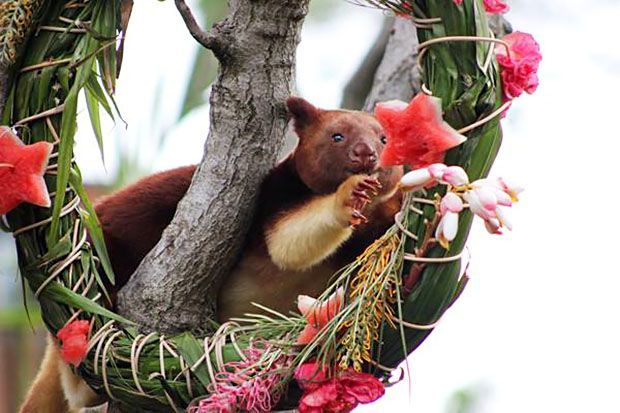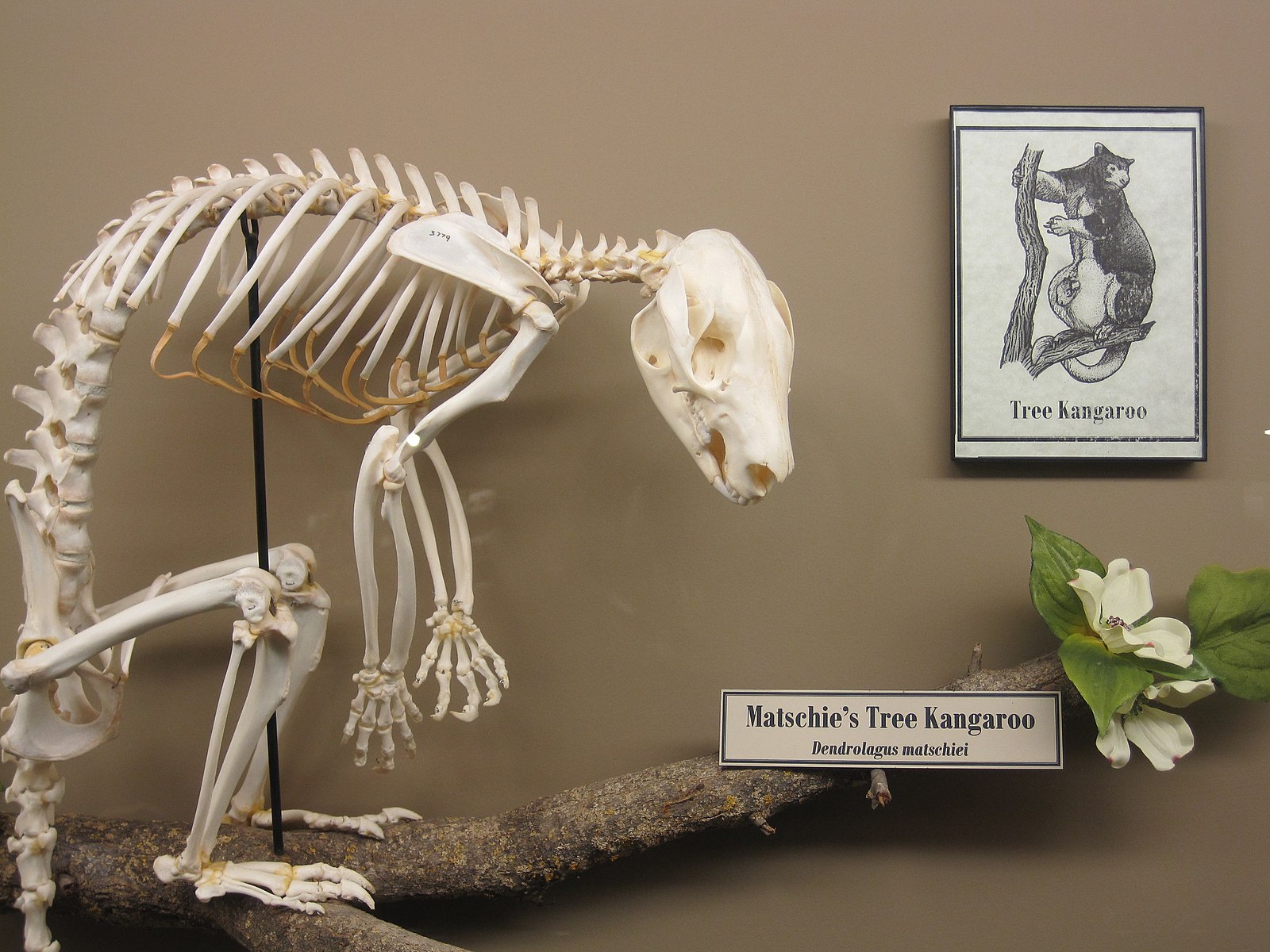The Great Tree Kangaroo
Oh Great Tree Roo! What is in store for us this holiday season? What gifts and joy will you bestow upon us as we gaze at your wonderousness and as you sit so high up above our heads. Will you shower us in good wishes for a new year, or provide some words of wisdom? Ah, if only we could talk to you.
Might your message be about conservation and preservation of wild places in the world? About poaching and hunting that reduces your numbers? About how your habitats are being destroyed or replaced by logging, timber production, and how this exposes you to predators?
Oh Great Tree Roo, we really should do more to save you. And some folks are.

Episode: File 0054: Deep Sea Diwali Roos and Other Holiday Miracles
Release Date: December 10 2021
Researched and presented by Halli
Tree kangaroo seems like a paradoxical term. Kangaroos are large, powerful land marsupials unlike anything on any other continent outside Australia. But evolution is a funny thing, and out of it we got tree kangaroos. They are the only true arboreal macropods (a family of marsupials that include kangaroos, wallabies, wallaroos, pademleons, quokkas, and other creatures). At one point, all macropods were arboreal, but now only the tree kangaroos are. Modern macropods are also herbivorous, mostly grazers that have specialized teeth for cutting and grinding up fibrous plants.
Tree kangaroos are utterly fascinating creatures. If you're wondering if I have a penchant for animals that are rare and live in only very particular parts of the world (see our kakapo episode!), then you'd be right! I was first introduced to tree kangaroos because of a children's book, Quest for the Tree Kangaroo by Sy Montgomery. And it might be a kids book, but I highly recommend it and all of Sy's books. Tree kangaroos only live in the tropical rainforests of New Guina, far northeastern Australia, and some of the islands in the region. Some are mountain dwellers and others live in the lowlands, but habitat destruction is one of the biggest threats to all of them.

There are 14 species of tree kangaroos. The most "well-known" is likely the Matschie's tree kangaroo, hailing from Papua New Guinea. They are zoo inhabitants in many places.
These creatures aren't big; for example, the Matschie's tree kangaroo is about 20-32 inches (51-81 cm) long and weigh between 20 and 25 lbs (9-11 kg). Sexual dymorphism is really low, the males and females look much like each other and are roughly the same size and weight. They live for about 14 years in the wild and roughly 20 in captivity. I found their breeding and gestation info to be fascinating - they have no particular season in which they breed, gestation lasts 44 days, and joeys typically stay in the pouch for at least 11 months. There's little known about breeding in the wild, so the only published data so far is from captive tree kangaroos.

We know tree kangaroos primarily eat leaves and fruit but they will also eat grains, flour, nuts, sap, and tree bark. But interestingly, some captive tree kangaroos eat proteins like eggs, birds, and snakes, so they become omnivores. I have no idea why that would be but it's kind of wild! Tree kangaroos also spend about 60% of their time sleeping and they don't build nests or anything like that. If they're tired, they just drop on a branch if they feel safe.
They are incredible jumpers. They can leap nine metres (almost 30 feet) horizontally, like to a neighboring tree, and a stunning 18 metres, or 60 feet, directly to the ground. 60 ft is approximately 6 stories.
Because these creatures are so endangered, there are many who are fighting to save them and increase wild populations. One group, Tree Roo Rescue and Conservation Centre, is a nonprofit that "rescues and rehabilitates orphaned, injured, or displaced tree kangaroos for release back into the wild or for life in captivity as breeding animals for education and conservation in zoos." From their website, they do a ton of work for the good of these creatures and are funded solely through donations. You can also adopt a tree roo! And I did! We, as a group, adopted a tree roo named Lily, so happy holidays!

Oh, Great Tree Roo, thank you for being a part of our world. We need to take better care of you! You have adorable faces and short, broad feet, and are clumsy on the ground but fly graceful and high in the trees. Happy holidays, Great Tree Roo!




